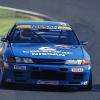My Mini Timelapse Movie
Announcements
-
Latest Posts
-
BRUH, one of the biggest mistakes of my life..... and i've had plenty ;[)
-
@Murray_Calavera iam just considering options 🙂 of course it is very expensive so that why i ask here 🙂 @joshuaho96 I looked at that GCG hybrid(i remember looking at it few weeks before) So this is "that" hybrid where i send them my turbo and they upgrade the inside to Garrett stuff and then they send it back. It cost around 1200-1300 USD which is FAR cheaper than the HKS and it is what iam looking for(i just do not have experience like this...to send something off to "upgrade" ) @tylink720 that is like 150 USD turbo no? 😄 I dont think i have the "ease on my mind" with this kind of turbo. I just put over 7000k USD to "LINK" up my engine...dont want to blow it up with cheap turbo 😄 EDIT: https://www.cj-motor.com/gcg-turbo-charger-for-nissan-rb20det-rb25det-high?srsltid=AfmBOooVeOZ6CZ6r1AIv5m-KPaa6BvudIPJTY8LW78khkd-gQlsaCht9 I looked at this and it seems ok? It is that CGC hybrid and it costs around 1250 USD (with back shipping). Do any of you have experience with this hybrid on NEO turbo? I quickly look thru the forum/web and it seems very good.
-
Echo the awesome sentiment 👍 Definitely a car worth saving. Looking forward to seeing updates as well.
-
Scenic roads, stunning skylines, and Chickos to finish it off! Join SAU NSW as we cruise through the Royal National Park and along Lawrence Hargrave Drive to Figtree! Sunday 26th October 2025 4:30PM Meeting Waterfall Station Parking 5:00PM Cruise Departure Royal National Park > Lawrence Hargrave Dr > Memorial Dr > Sid Parrish Park 6:15PM Arrival at Sid Parrish Park Figtree Meet Location: Waterfall Station Parking Final Destination: Sid Parrish Park RSVP: https://forms.gle/E4s5SiRKQfDdypky8 *Disclaimer* There will be a lead and follow car so no one should get lost. If you would like to attend or bring others along please put your name down and a +1 as numbers will be needed prior! This is NOT a race and we will all be adhering to all road rules. If this is what you want please come to one of our many track days. This is an official SAU:NSW event and will be run under a CAMS permit. One of the things that really sets our club apart is our commitment to being true enthusiasts. When on normal roads we strive to maintain good relations with the authorities as well as the public in general. When attending one of Skylines Australia NSW events please try to: • Be aware of surrounding environment and act accordingly. • Drive courteously on the state’s roads as a true enthusiast should. • Understand how important it is to maintain the good name of SAU NSW and thus, treat others accordingly. • Any misbehavior will not be tolerated and you will be asked to leave.
-
It's funny, as Ive seen plenty of people use them in cheap builds on YT. And they actually go okay, even though a lot of other maxspeedingrods stuff is terrible. Those turbos seem reliable enough, the only part being, a good quality turbo that is "identical" to it, will out perform it day in and day out. In both a lower boost threshold, and the ability to flow more air at the same boost pressure. As a cheap cheap replacement, not a terrible choice. For cheap and shouldn't blow in a day, not terrible (like other eBay/Temu turbos) for low cost and still decent performance, that's where the question comes in to play from the results I've seen. I'd actually find it hilarious to buy one, and strap it to a paddock basher or some other cheap as POS originally NA car, and send it to the moon!
-






Recommended Posts
Create an account or sign in to comment
You need to be a member in order to leave a comment
Create an account
Sign up for a new account in our community. It's easy!
Register a new accountSign in
Already have an account? Sign in here.
Sign In Now